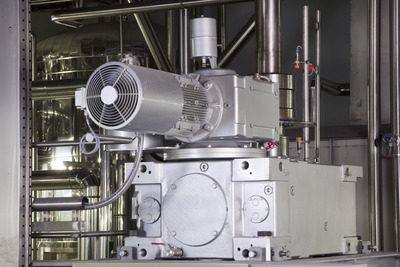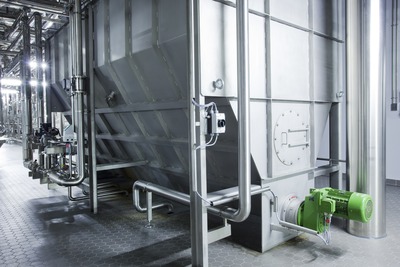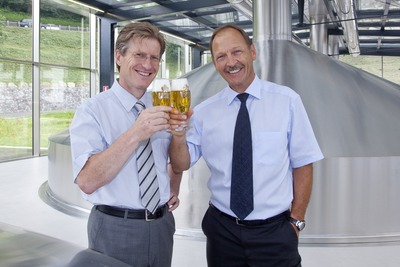Driving energy-efficient beer production
Thursday, 28 February, 2013
During 40 years of around-the-clock operation, the Forst brewhouse produced 25 million hectolitres of beer. Recently, Forst management decided to construct a new brewhouse that is highly efficient, complies with the latest safety requirements and produces the lowest possible emissions. The change paid off: in the first week, the new brewhouse reduced its primary energy consumption by 30%.
The project was ambitious. Engineers and technicians had just 16 months to construct the main components from scratch, including five large vats, as well as the technology and piping systems, a newly designed water supply, a malting plant with 12 silos and three storage vats.
NORD Drivesystems assembled the geared motors for all the vessels according to the specific requirements, from the grinding mill - which grinds the malt at the start of the brewing process - to the screw conveyor which removes the spent grain.

In the first stage of the process, the malt is mixed with spring water in the mash tuns and heated by thermally optimised conducting surfaces. A frequency-controlled NORD helical bevel gear motor with a temperature sensor drives the agitator inside the vessel. Subsequently, the liquid is pumped into the lauter tun.
Measuring 8.6 m in diameter and weighing almost 21.5 t, the lauter tun is the heart of the brewhouse. Liquids and solids are separated in a fully automated process. The spent grain settles on the vat floor, forming a natural filter layer. A raking machine loosens this layer to ensure optimum flow of the wort. Pressure sensors at the bottom of the vessel detect the spent grain’s consistency and the drive adjusts the machine’s speed accordingly. This intelligent control system enables flow rates between 9 and 14 litres per minute and square metre.
Next, the machine is lowered and flat bars push the spent grain out of the tun. This step is also fully automatic. If too much mass accumulates, the lowering process stops and the speed is adjusted. In order to process the material gently, the spent grain is loosened at low speed. When the spent grain is removed, high speeds are required so the vessel can be emptied quickly. Thus, the clouding of the spent grain is minimal and the flow is very efficient.

Speed, current consumption and motor temperature are monitored continuously. These tasks are handled by a custom NORD drive unit based on a splined hollow shaft. The drive is a combination of a motor, industrial gear unit and helical bevel gear unit. It has a maximum torque of 96,000 Nm and continuously regulates the circumferential speed from 1 to 100 m/min while providing a constant torque.
The lifting device lifts and lowers the raking machine accurately to the millimetre, even under full load. A limit switch and optical sensor ensure exact positioning. The height can be adjusted during standstill, in an idle phase and during operation. To this end, both the helical gear unit and the oil-hydraulic lifting unit are designed to withstand the axial and radial loads which occur in the process. The drive motor has an 18.5 kW power rating and provides output speeds of 0.04 to 4 rpm.
“Constructing the new brewhouse, we wanted to ensure that the resources would be processed as gently as possible,” said Dr Walther Unterthurner, the brewery’s technical director. “Furthermore, we wanted to use these modern technologies to considerably reduce energy consumption and emissions.”

A heat recovery system has also been integrated into the vapour condenser. The heat required to produce the wort is stored in hot water tanks and is re-used for subsequent brewing processes. According to Unterthurner, these measures have already reduced the consumption of primary energy by 30%. “Our target is to reduce steam consumption by at least 47%,” he added.
Six beverage trends predicted for 2026
Demand for customisation, 'protein-ification' and sustainable storytelling are some of...
Making UHT processing less intensive on energy
A nutritional beverages company was seeking a more sustainable way to produce UHT beverages using...
Tasty twist for chocolate alternatives
Food scientists develop two novel flavour-boosting techniques to transform carob pulp into a...








